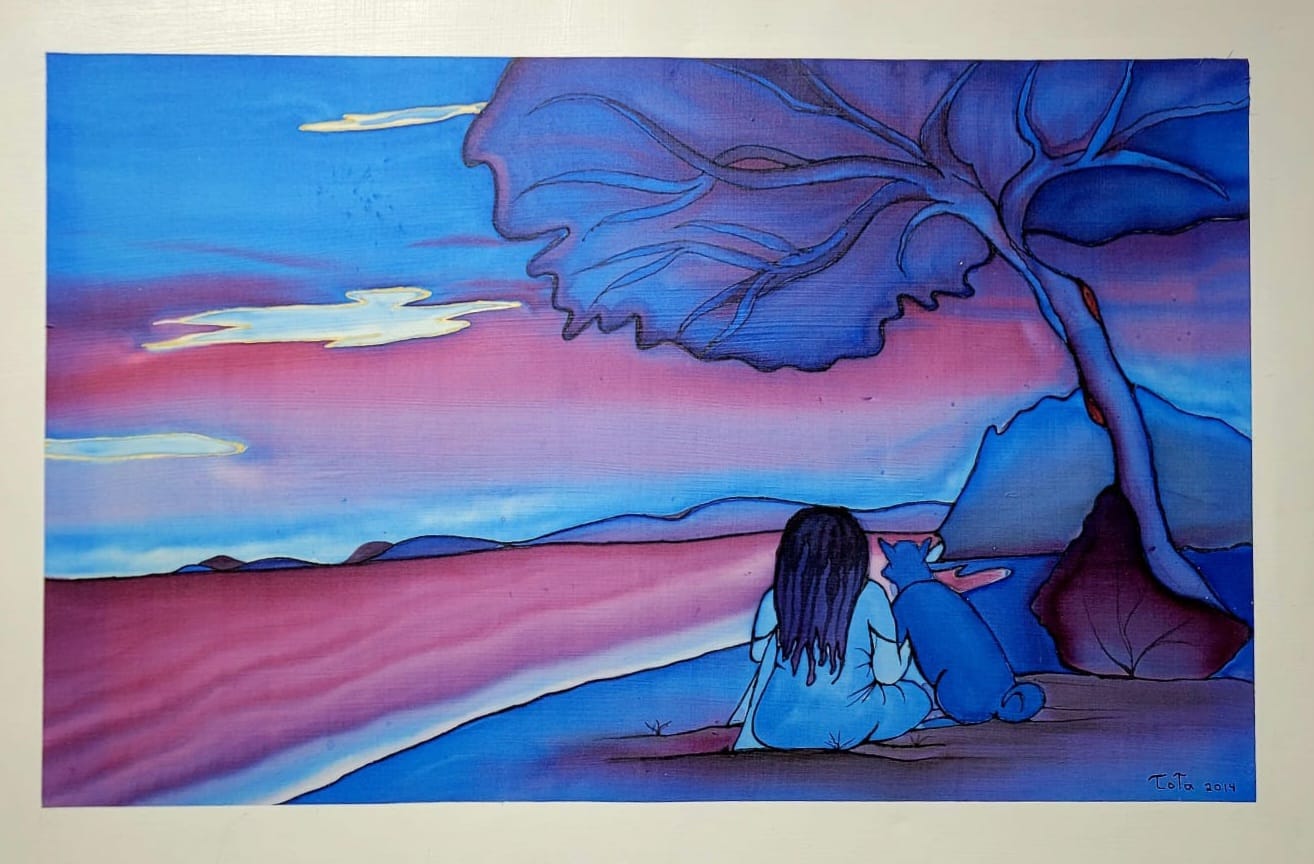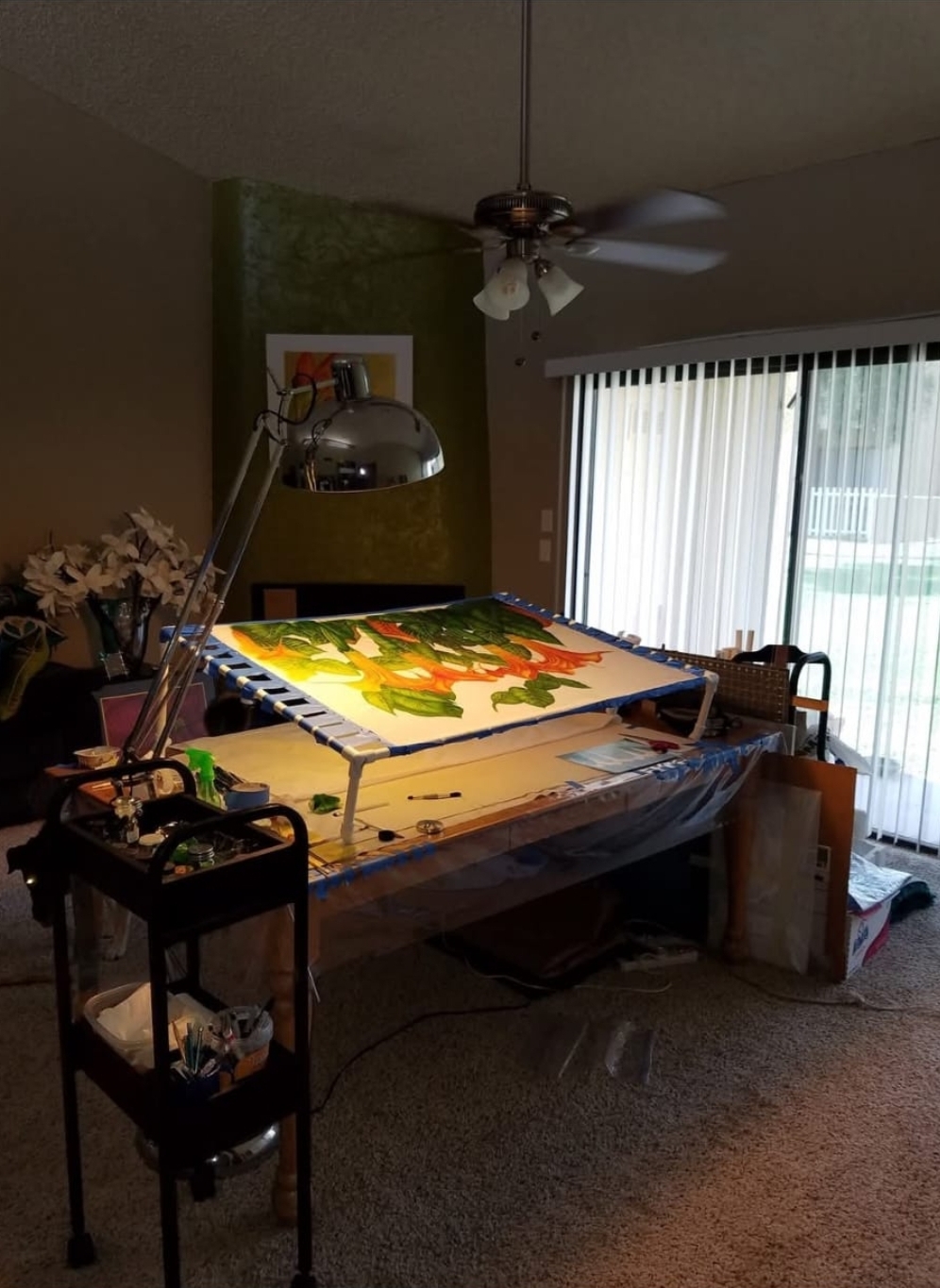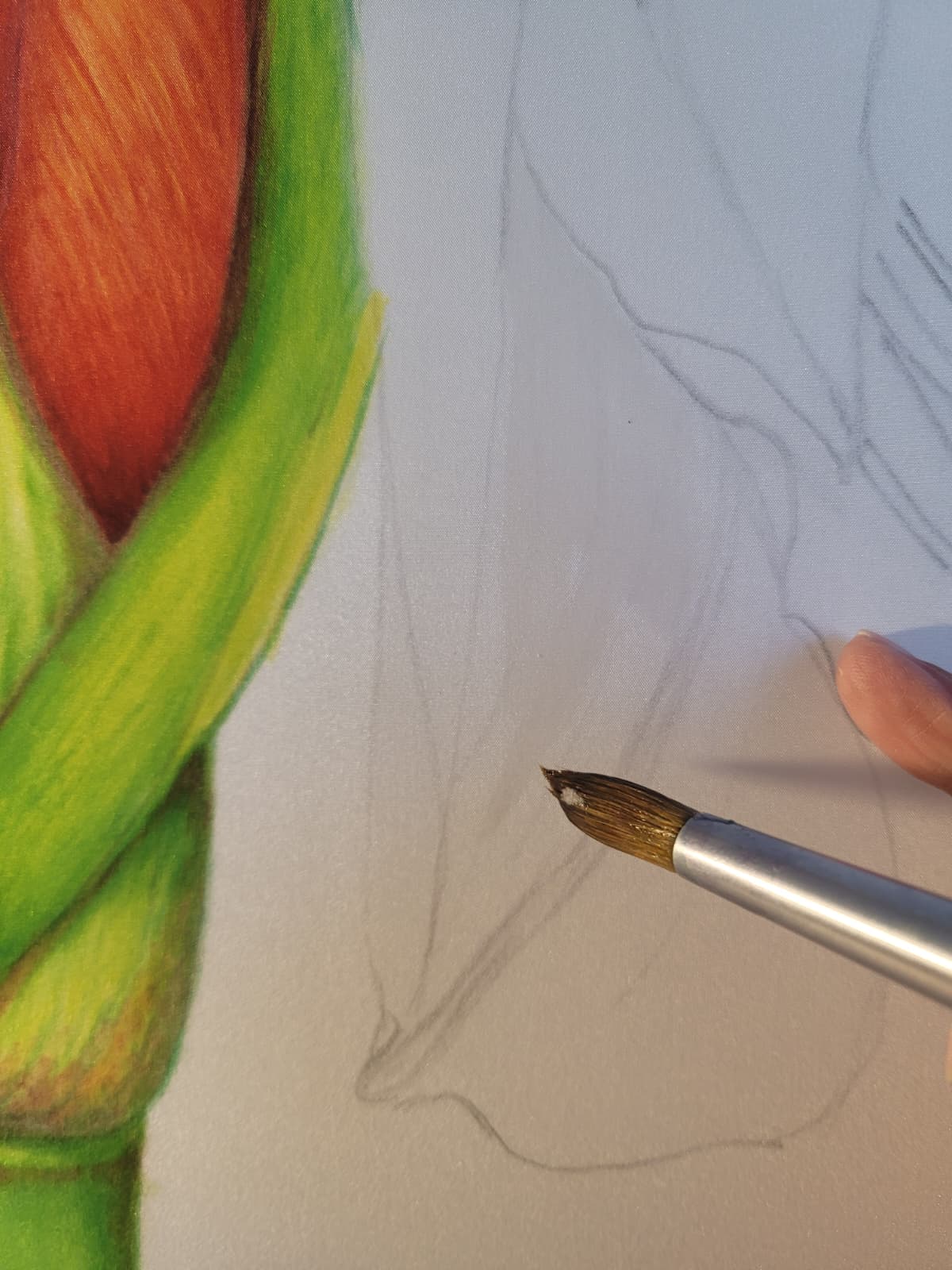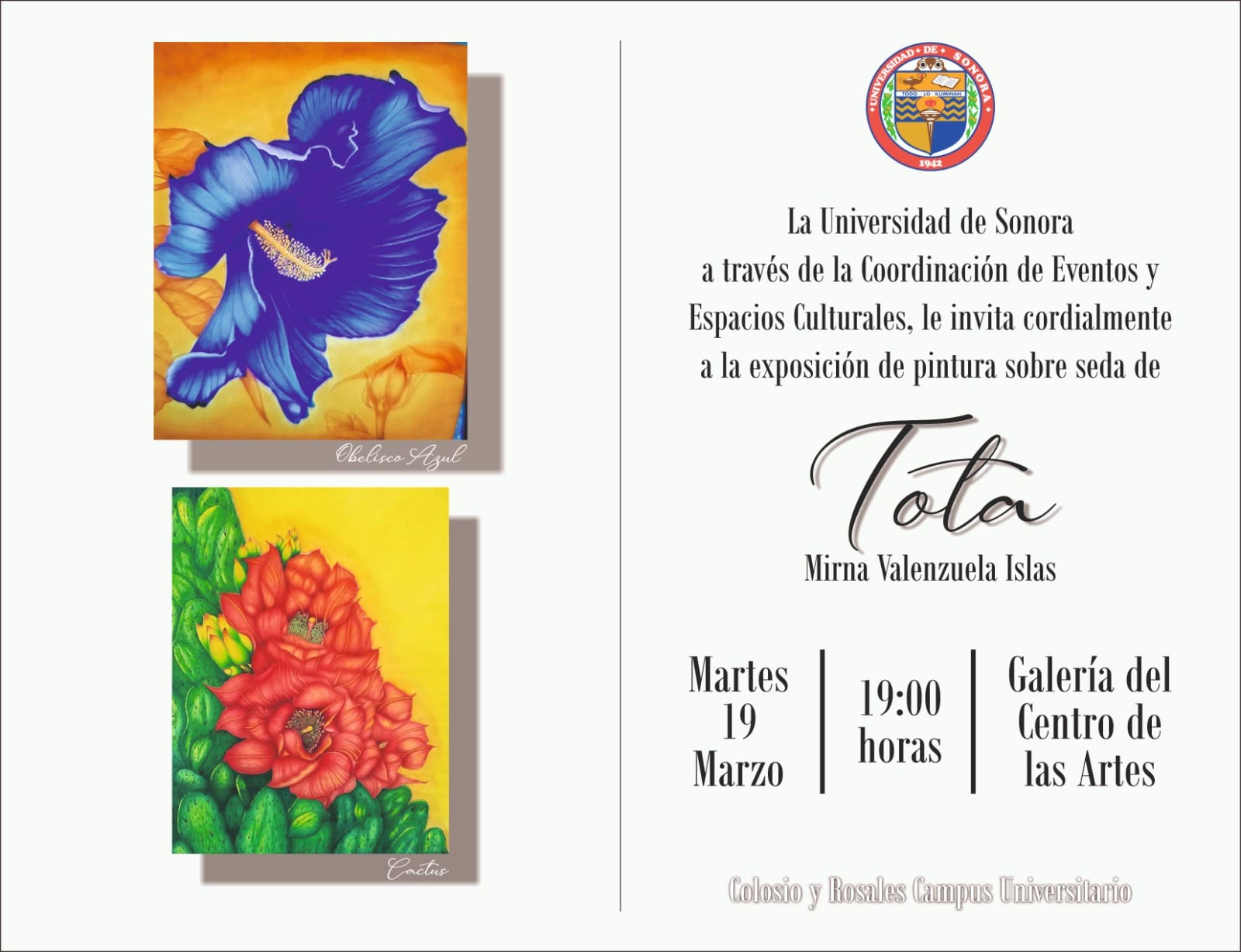Tota´s
Mirna Valenzuela Islas
About me
I am
Mirna Valenzuela Islas(1950).
A retired Scientist from the University of Sonora, Mexico and a self taught Silk Artist. My ancestors come from the Mayo tribe from Sonora, Mexico, where I was born. Since I was a child and up to now, I have been fascinated by Art in its multiple expressions. Among those expressions are the Chinese and Japanese hand paint Silk Art. By using my skills in Science and painting skills; I started researching and experimenting on Silk hand painting . With these skills, I started my personal and fascinating Silk Road since 12 years ago.
My specialty and experience
After more than 10 years of Silk hand painting, I can now master the
most difficult technique to hand paint on Silk without guta lines and
using steaming as a process to set the steam dyes that I use.
«Tota»
I sign as Tota to honor my mother’s nick name and talent as a fashion designer.
Modern hand painting Silk Art
Is getting more known and appreciated in around the world. However, very few people knows how it is made.
My Technique
I developed my own techniques based on an antique Chinese sizing resist technique from about 700 BC.
Brief History of Silk
Modern hand painting Silk Art is getting more known and appreciated in America. However, very few people knows how it is made. Therefore, I would like to briefly explain about the History of Silk, how Silk painting started and how I developed my own techniques based on an antique Chinese sizing resist technique from about 700 BC.
Silk Art started in China about 5 thousands years ago. As many inventions, Silk was discovered by chance. The Chinese recognize its discovery to empress Xi Ling Shi, known as Leizu. She was taking her tea out in her garden and a cocoon fell into her hot cup. She observed and got fascinated by the threads of Silk coming out of the cocoon. Later, she learned by herself how to weave those threads and thought her servants how to weave and turned them into a soft raw Silk fabric. For this, the Chinese named her the Goddess of Silk Weaving, since the 27th Century BC.
Since then, the Chinese started the Silk fabric production in looms and keep the monopoly for 3000 years. During those times, the wardrobe made with silk fabric were exclusively for emperors and dignitaries. Silk become more valuable than gold and it was used as a currency too. But, It was until the second Century BC, that China opened to trade Silk and exported it to the West to many regions of Asia through what is known the Silk Road. Chinese also used the silk to write on about Buddhism and transported it in rolls to spread this religion into Japan. Now days the best Silk fabric is produced in China and the high prices are due to the complex and manufacturing process. Silk, as animal fabric is still produced from cocoons from a larvae Bombyx mori raised in farms. The threads are still woven in the traditional manual looms to obtain the silk fabrics of different grades or momme.
My beginnings.
As a lover of Art, I started to do textile paintings and Batik using wax on cotton. During my researches about Batik, I found the Art of Chinese and Japanese hand silk paintings. I noticed in many of these silk paintings the use of a liner called guta or line resist with the purpose to prevent the dyes to mix with each other and invade other colored areas. Afterwards, I started my first silk hand paintings and silk dyes using guta lines like the blue/purple painting below.

Later, I realized that there were other hand paintings without gutta lines and they were more beautiful, but more diffcult. Why? First of all Silk fabrics are very thin and porous, making the liquid dyes to spread quickly and diffcult to hold in a specifc area; reason for the gutta lines.
Then, I realized that painting without gutta lines will be my greatest challenge. I started to research and the first thing I learned was that I needed a primer or resist. I experimented with different home made or commercial primers, without success.
However, during my constant research I was lucky to have found a documentary (video on YouTube) published by Victoria and Albert Art Museum, London, England “ How was it made? Silk painting”.

Here I found out at the beginning of hand silk painting around 700 BC, artist used raw Silk, dyes made from minerals and vegetables, sumi hair brushes without gutta lines!. But, to paint without gutta lines, they primed the porous raw Silk with a mix of gelatine and Alum, now known as sizing . Gelatin covered the porous of the raw silk and Alum, which is a mordant, was used to set the dyes into the Silk without steaming. However, no information was shown about a formula.
With my excitement about these foundings, I was in front of another challenge. To find a formula of mixing gelatin and Alum. Through a lot of experiments with different combinations of gelatin and Alum along with the use of modern Habotai Silk, steam dyes and brushes, I finally found my own formula mixing the gelatin and the Alum! as a sizing or resist. But, my own formula was not enough. I also needed painting techniques that works with this formula. So, through different experiments again, I finally was able to paint on Silk without gutta lines by combining my primer with these painting techniques: Free Flow, Underpainting and dry-brush painting techniques. After more than 10 years of Silk hand painting, I can now master the most difficult technique to hand paint on Silk without gutta lines and using steaming as a process to set the steam dyes that I use.

My paintings are for decoration and I mount them on stretched canvas with a UV Varnish to protect them from the environment; as I learn from Karen Systek, a professional Silk painter.
Brief History of Silk
Modern hand painting Silk Art is getting more known and appreciated in America. However, very few people knows how it is made. Therefore, I would like to briefly explain about the History of Silk, how Silk painting started and how I developed my own techniques.
Silk Art started in China about 5 thousands years ago. As many inventions, Silk was discovered by chance. The Chinese recognize its discovery to empress Xi Ling Shi, known as Leizu. She was taking her tea out in her garden and a cocoon fell into her hot cup. She observed and got fascinated by the threads of Silk coming out of the cocoon. Later, she learned by herself how to weave those threads and thought her servants how to weave and turned them into a soft raw Silk fabric. For this, the Chinese named her the Goddess of Silk Weaving, since the 27th Century BC.
Since then, the Chinese started the Silk fabric production in looms and keep the monopoly for 3000 years. During those times, the wardrobe made with silk fabric were exclusively for emperors and dignitaries. Silk become more valuable than gold and it was used as a currency too. But, It was until the second Century BC, that China opened to trade Silk and exported it to the West to many regions of Asia through what is known the Silk Road. Chinese also used the silk to write on about Buddhism and transported it in rolls to spread this religion into Japan. Now days the best Silk fabric is produced in China and the high prices are due to the complex and manufacturing process. Silk, as animal fabric is still produced from cocoons from a larvae Bombyx mori raised in farms. The threads are still woven in the traditional manual looms to obtain the silk fabrics of different grades or momme.
My beginnings.
As a lover of Art, I started to do textile paintings and Batik using wax on cotton. During my researches about Batik, I found the Art of Chinese and Japanese hand silk paintings. I noticed in many of these silk paintings the use of a liner called guta or line resist with the purpose to prevent the dyes to mix with each other and invade other colored areas. Afterwards, I started my first silk hand paintings and silk dyes using guta lines like the blue/purple painting.

Later, I realized that there were other hand paintings without gutta lines and they were more beautiful, but more diffcult. Why? First of all Silk fabrics are very thin and porous, making the liquid dyes to spread quickly and diffcult to hold in a specifc area; reason for the gutta lines.

Then, I realized that painting without gutta lines will be my greatest challenge. I started to research and the first thing I learned was that I needed a primer or resist. I experimented with different home made or commercial primers, without success.
However, during my constant research I was lucky to have found a documentary (video on YouTube) published by Victoria and Albert Art Museum, London, England “ How was it made? Silk painting”.
Here I found out at the beginning of hand silk painting around 700 BC, artist used raw Silk, dyes made from minerals and vegetables, sumi hair brushes without gutta lines!. But, to paint without gutta lines, they primed the porous raw Silk with a mix of gelatine and Alum, now known as sizing . Gelatin covered the porous of the raw silk and Alum, which is a mordant, was used to set the dyes into the Silk without steaming. However, no information was shown about a formula.
With my excitement about these foundings, I was in front of another challenge. To find a formula of mixing gelatin and Alum. Through a lot of experiments with different combinations of gelatin and Alum along with the use of modern Habotai Silk, steam dyes and brushes, I finally found my own formula mixing the gelatin and the Alum! as a sizing or resist. But, my own formula was not enough. I also needed painting techniques that works with this formula. So, through different experiments again, I finally was able to paint on Silk without gutta lines by combining my primer with these painting techniques: Free Flow, Underpainting and dry-brush painting techniques. After more than 10 years of Silk hand painting, I can now master the most difficult technique to hand paint on Silk without gutta lines and using steaming as a process to set the steam dyes that I use.
My paintings are for decoration and I mount them on stretched canvas with a UV Varnish to protect them from the environment; as I learned from Karen Systek, a professional Silk painter.
The creative process transport myself to the Spiritual World
Exhibits and Recognitions
Centro de las Artes de la Universidad de Sonora April 19th to 30th of May 2023 Hermosillo. Sonora Mexico

Sedona Art Festival 2024 0ct 12th to 13th 2024 Sedona Arizona, USA
Kierland Fine Art & Wine Fall Festival Oct 26th to 27th 2024 Scottdale Arizona, USA
Copyright © Tota´s Silk Art.
Web Design by: tunegociodigitalsv.com/bio







